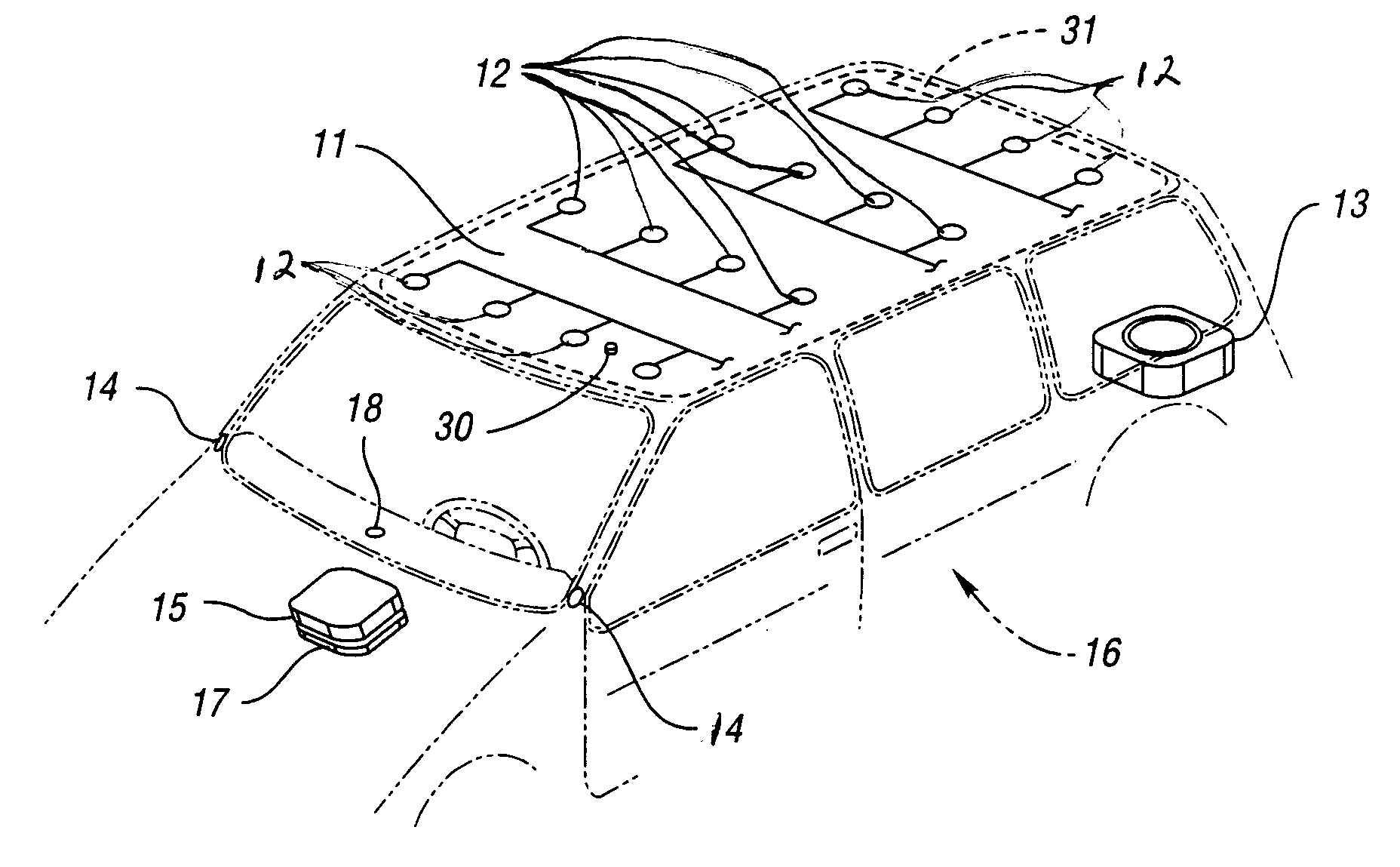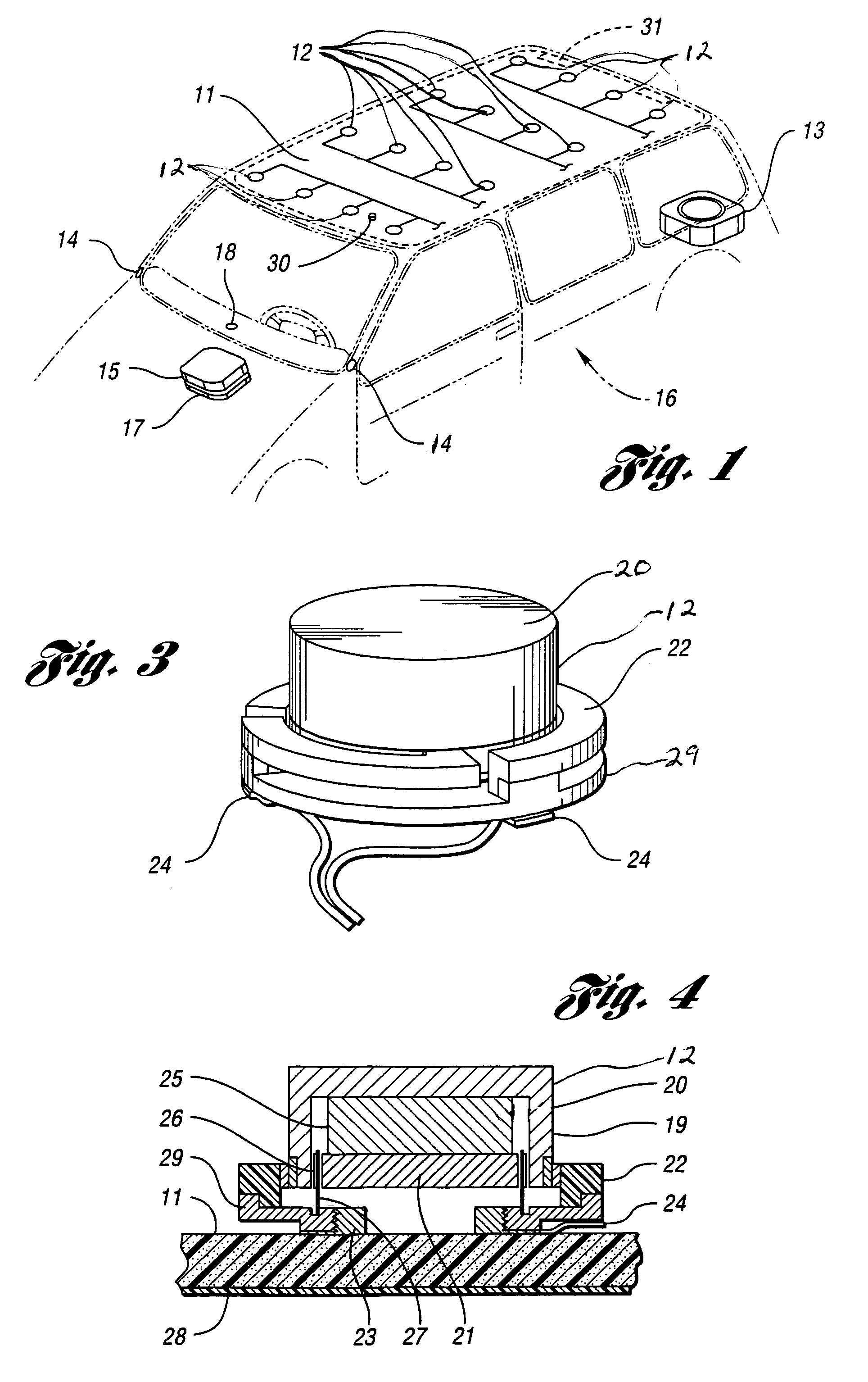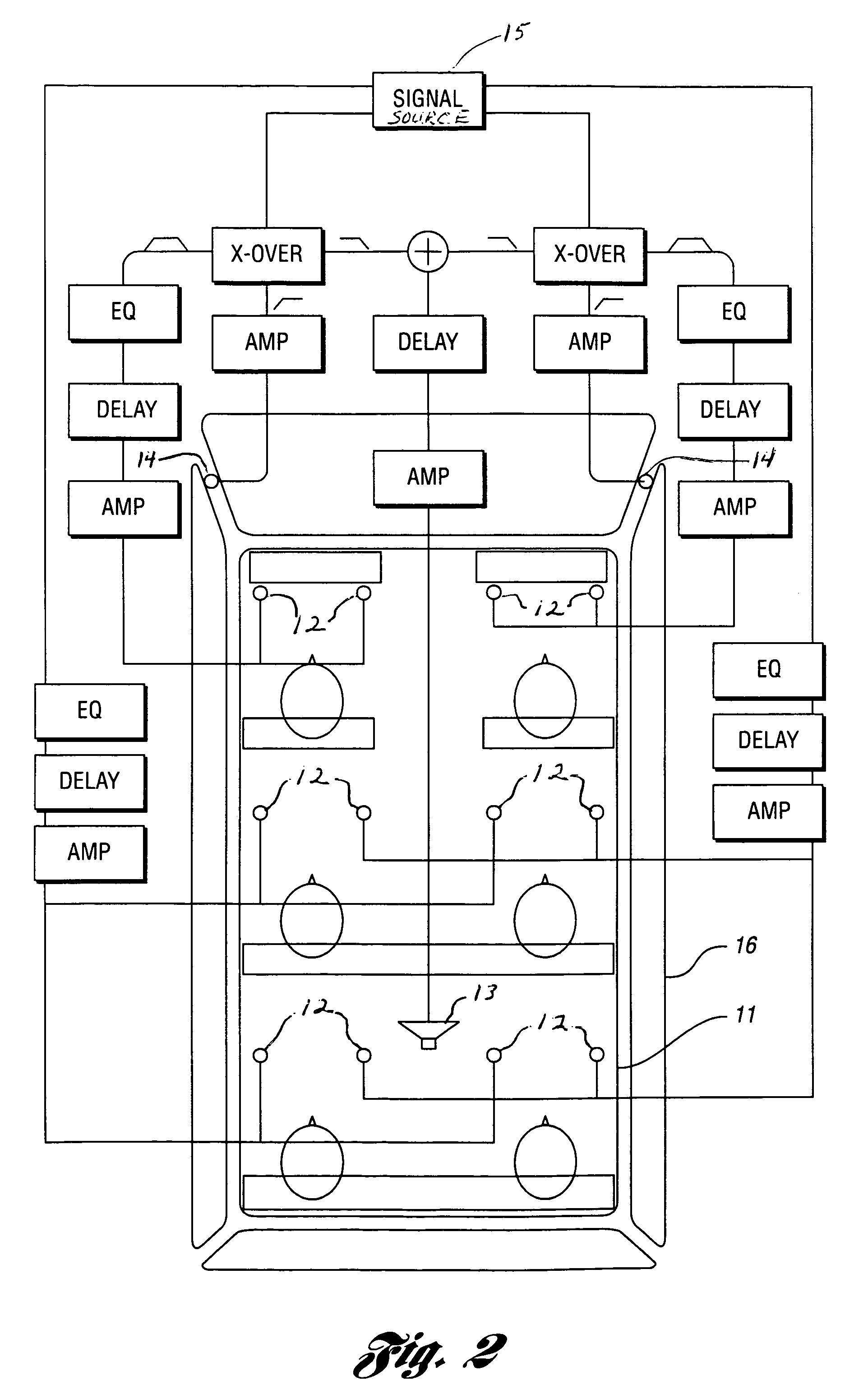Vehicular audio system and electromagnetic transducer assembly for use therein
a technology of electromagnetic transducer and audio system, which is applied in the direction of electromechanical transducers, transducer diaphragms, instruments, etc., can solve the problems of substantial shock and environmental abuse, individual installation and connection, and add substantial weight to a vehicle, so as to achieve convenient installation and service
- Summary
- Abstract
- Description
- Claims
- Application Information
AI Technical Summary
Benefits of technology
Problems solved by technology
Method used
Image
Examples
Embodiment Construction
[0054]Referring now to FIG. 1, there is illustrated a vehicle, generally indicated by reference numeral 16, including an audio system embodying the invention. The audio system includes either a commercially available audio or signal source 15 which may include a tuner, cassette player, compact disc player, DVD player, communications unit, etc. or a unit incorporating the above with additional signal processing circuitry to provide signal delays, equalization and amplification as described below. The additional signal processing including signal delays and amplification as described below may be incorporated into a separate unit 17.
[0055]Processed audio signals of the unified audio unit or the separate signal processing / amplifier unit 17 are conducted via audio cabling to electromagnetic transducer assemblies in the form of subassembled drive motors 12 that are affixed to a headliner 11 which operates as a headliner speaker diaphragm per the functional diagram shown in FIG. 2.
[0056]A...
PUM
 Login to View More
Login to View More Abstract
Description
Claims
Application Information
 Login to View More
Login to View More - R&D
- Intellectual Property
- Life Sciences
- Materials
- Tech Scout
- Unparalleled Data Quality
- Higher Quality Content
- 60% Fewer Hallucinations
Browse by: Latest US Patents, China's latest patents, Technical Efficacy Thesaurus, Application Domain, Technology Topic, Popular Technical Reports.
© 2025 PatSnap. All rights reserved.Legal|Privacy policy|Modern Slavery Act Transparency Statement|Sitemap|About US| Contact US: help@patsnap.com



